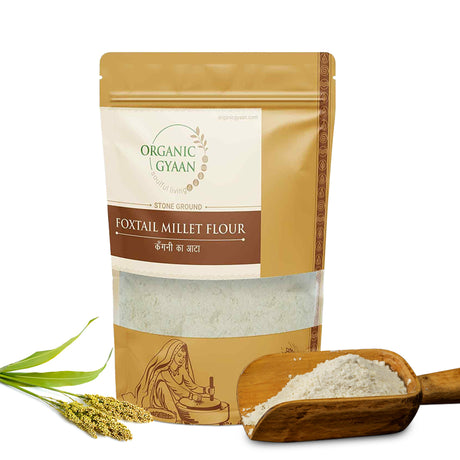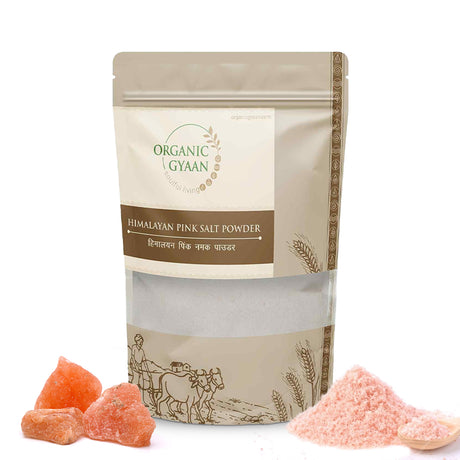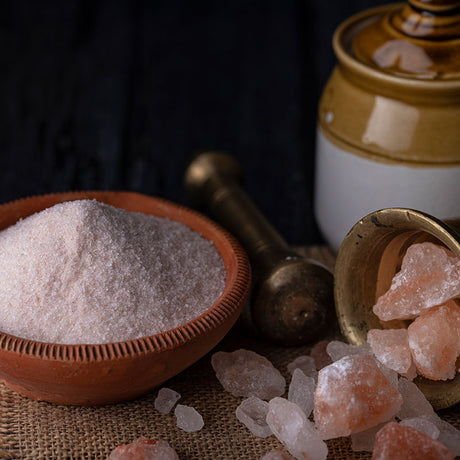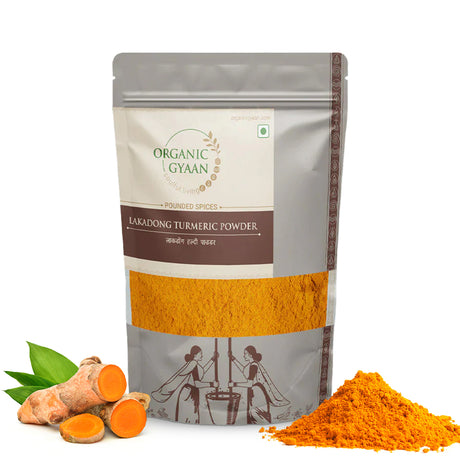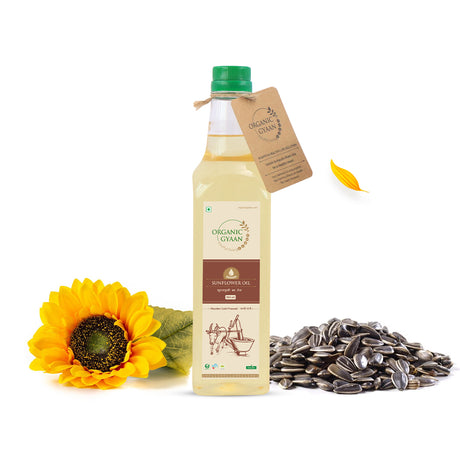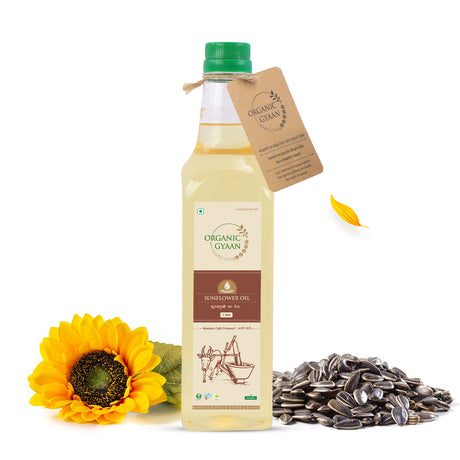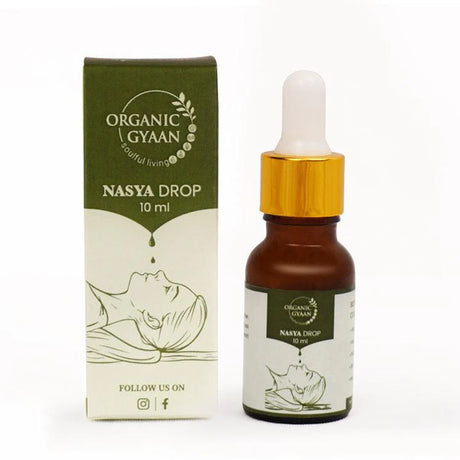One of the most naturally occurring sweet substances is jaggery, or as it's commonly known in the Indian subcontinent, Gur. Not only is it a delightful sweetener, but it's also packed with nutritional value that offers numerous health benefits. In this blog, we will uncover the magic of jaggery, its nutritional profile, and why it is referred to as more than just a sweetener.
Nutritional Value of Jaggery
|
Nutrition |
|
|
|
Calories |
383 |
|
|
Carbohydrates |
98 grams |
|
|
Protein |
0.4 grams |
|
|
Fat |
0.1 grams |
|
|
Dietary Fiber |
0.2 grams |
|
|
Calcium |
80 milligrams |
|
|
Magnesium |
70 milligrams |
|
|
Potassium |
1050 milligrams |
|
|
Iron |
11 milligrams |
|
|
|
|
Calories in Jaggery
Even though jaggery is healthier than white sugar, it's still a form of sugar, and it is high in calories. Approximately 100 grams of jaggery provides nearly 383 calories, with almost all its calories coming from carbohydrates. Hence, even though jaggery has numerous health benefits, it should be consumed in moderation.
Health Benefits of Jaggery
Jaggery, with its rich and unique nutritional profile, offers a multitude of health benefits:
1. Aids in Digestion: Jaggery activates the digestive enzymes in the body, which helps in the regular movement of the bowel, thus preventing constipation and indigestion.
2. Detoxifies the Body: Jaggery is known for its natural detoxifying properties, aiding in the removal of harmful toxins from the body and purifying the blood.
3. Boosts Immunity: The wealth of antioxidants and minerals, particularly iron in jaggery, can strengthen your immunity by combating harmful free radicals.
4. Regulates Blood Pressure: The presence of potassium and sodium in jaggery helps maintain acid levels in the body and ensures a balanced blood pressure.
5. Provides Energy: Being a complex carbohydrate, jaggery releases energy slowly, thereby preventing sudden spikes and crashes in blood sugar levels.
6. Promotes Heart Health: The potassium content in jaggery helps to control blood pressure and reduce water retention. By managing these factors, jaggery can contribute to a healthier heart and a reduced risk of cardiovascular diseases.
7. Relieves Menstrual Pain: Jaggery, being a natural sweetener, is known to help alleviate pain associated with menstrual cramps. It is also believed to release endorphins, which elevate mood during menstruation.
8. Prevents Respiratory Problems: Jaggery is often used in traditional medicine for respiratory problems. It can help clear the respiratory tract by dissolving mucus, which can be especially helpful for people suffering from asthma.
9. Controls Body Temperature: Jaggery helps in controlling the temperature of the body. It is particularly beneficial in keeping the stomach cool, thereby reducing common summer problems like heat stroke and fatigue.
10. Promotes Bone Health: Jaggery is rich in calcium, an essential mineral for bone strength. Regular consumption of jaggery can contribute to stronger bones and may prevent joint and bone problems like arthritis.
Jaggery for Diabetes
Jaggery can be consumed in moderation by individuals with diabetes, considering its lower glycaemic index compared to refined sugar. However, it still contains carbohydrates and should be consumed in controlled portions. Jaggery's nutritional profile includes minerals and vitamins, but it should not be relied upon as the sole source of these nutrients. It is important to consult with a healthcare professional or dietitian for personalized advice. Alternative sweeteners like stevia may be considered as well.
Normal Jaggery Vs Organic Jaggery
|
Types of Jaggery
Organic Jaggery, with its countless health benefits and distinct flavour, comes in various forms catering to different uses in cooking. Here are the three most common types of jaggery:
1. Whole Jaggery: This is the most traditional form of jaggery. It is often seen in the shape of discs, blocks, or cakes and is used widely in traditional recipes. Whole jaggery is known for its rich, full flavour.
2. Jaggery Granules: These are small, broken pieces derived from whole jaggery. The whole jaggery, after preparation, is broken down into these smaller, granular pieces that are easier to measure, use, and store. These granules are versatile and can be conveniently used in various dishes.
3. Jaggery Powder: This form of jaggery is finely ground, making it the most convenient form to use as it dissolves easily. It can be used in a variety of dishes from traditional sweets to modern baked goods. Jaggery powder also works well as a sweetener for beverages.
Jaggery the Culinary Delight in Various Dishes
Jaggery, with its distinct, rich, and earthy flavour profile, is used extensively to bring sweetness and depth to a myriad of dishes around the world. Here are some popular dishes where jaggery takes centre stage:
1. Payasam (South India):
Payasam is a classic dessert from South India. It is a creamy, sweet pudding made from rice or lentils, milk, and jaggery. The jaggery not only sweetens the dish but also adds a unique depth of flavour that contrasts beautifully with the other ingredients.
2. Pongal (India):
Pongal is a traditional dish made during the harvest festival of Pongal in Tamil Nadu, India. This creamy, sweet dish made from newly harvested rice, lentils, jaggery, ghee, and cashews is a testament to the sweetness of jaggery.
3. Gur Sandesh (East India):
This is a popular Bengali sweet made from cottage cheese, jaggery, and cardamom. The jaggery lends the Sandesh its characteristic brown colour and sweet taste.
4. Gur ka Paratha (North India):
Gur ka paratha is a winter specialty in North India, where whole wheat flour flatbreads are stuffed with a sweet filling of jaggery and ghee.
5. Jaggery Rice (India):
Jaggery rice, known as gur ke chawal, is a traditional Punjabi dish. The recipe uses jaggery and rice as the main ingredients, producing a delightful dish with a perfect balance of sweetness and nuttiness.
6. Panakam (South India):
Panakam is a traditional South Indian drink particularly made during the festival of Ram Navami. It’s a sweet and spicy beverage made from jaggery, water, ginger, cardamom, and pepper.
7. Peanut Chikki (India):
Peanut Chikki is a popular snack in India, especially in the winter months. This sweet treat is made from peanuts and jaggery, making it a healthier alternative to candies made with refined sugar.
These dishes not only demonstrate the versatility of jaggery in the culinary world but also its ability to enhance flavour profiles and add a healthy touch to dishes. It's no wonder that jaggery has become a kitchen staple in many parts of the world!
Conclusion
Jaggery, with its unique nutritional profile and health benefits, can certainly be part of a healthy diet. However, like all sweeteners, it should be consumed in moderation due to its high sugar content and calorie count. So, while enjoying the delightful sweetness of jaggery, remember to balance it with a well-rounded diet and regular physical activity. The gift of nature, Jaggery, or Gur, when consumed thoughtfully, can indeed offer some exceptional health advantages. Explore our online store to get the best of organic jaggery.




